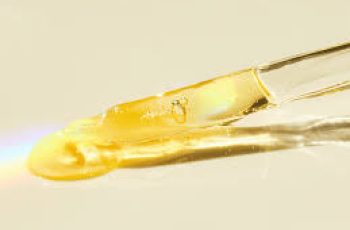Transforming Growth factor beta (TGF-beta) in Skin Serums
Transforming growth factor beta, most commonly known as TGF-beta or TGF-β, is an important growth factor found in antiaging serums. TGF-beta in skin increases collagen production, so it is found in many antiaging serums. However, growth factors in skin care products can be unstable and may not penetrate into the skin. (1) So- are TGF-β serums worth the money? Maybe and maybe not.
There are so many antiaging skin serums with antiaging ingredients. How do you know which is best?
The only scientific way to find the best growth factor or antiaging serum for you is to shop by your Baumann Skin Type.
What is TGF-β?
TGF-beta is the most important growth factor that regulates production of the extracellular matrix (ECM) proteins such as collagen, and elastin and the glycosaminoglycan sugars in the skin such as hyaluronic acid and heparan sulfate.
There are a few types of TGF-beta.
TGF-β1 is the type found in skin care products ad used as a treatment for skin rejuvenation, antiaging, and wound healing.(2)
TGF-beta in Skin
Transforming Growth Factor Beta (TGF-beta) is a multifunctional cytokine belonging to the transforming growth factor superfamily. These proteins play critical roles in the regulation of various cellular processes, including cell proliferation, differentiation, migration, and apoptosis. In mammals, the TGF-beta family is composed of several isoforms, such as TGF-beta1, TGF-beta2, and TGF-beta3, all of which are synthesized as precursor proteins and later become activated through a complex maturation process. TGF-beta acts as a potent regulator of many aspects of immune function, wound healing, and tissue regeneration, and it plays a key role in the development and homeostasis of several tissues.
What natural TGF-beta does in skin
In the context of skin health, TGF-beta plays a vital role in maintaining skin integrity and healing. It promotes the synthesis of extracellular matrix components, including collagen, elastin, and fibronectin, which are crucial for skin strength and elasticity. During wound healing, TGF-beta is essential in the regulation of inflammation and the recruitment of cells to the injury site, where it aids in tissue repair and scar formation. Additionally, it helps to regulate the balance of cell proliferation and differentiation in the skin, ensuring that the skin maintains its normal structure and function.
Dysregulation of TGF-beta signaling has been implicated in various skin conditions, including scarring, fibrosis, and certain inflammatory disorders.
How TGF-beta Increases Skin Collagen
Transforming growth factor beta (TGF-β) is a superstar when it comes to collagen production in the skin. This powerful protein regulates cell growth, proliferation, and differentiation, making it a key player in wound healing and skin rejuvenation.
When TGF-beta binds to receptors on fibroblast cells in the dermis, it kicks off a signaling cascade that ultimately ramps up collagen synthesis. Studies show that TGF-beta stimulates fibroblasts to produce more collagen types I and III, the predominant structural collagens that make up over 90% of the dermal matrix.
TGF-beta also inhibits collagen breakdown by blocking matrix metalloproteinases.
In addition, TGF-beta attracts immune cells called macrophages to wound sites, where they secrete more TGF-β to further drive collagen accumulation. This cytokine can even induce fibroblasts to transform into activated myofibroblasts, which synthesize abundant collagen during skin repair.
TGF-β Skin Benefits
TGF-β has many skin benefits because it turns on processes in the skin that make it stronger and younger. It affects many processes that play a role in skin aging. For this reason, good TGF-b products can improve fine lines and skin texture.
This antiaging growth factor:
stimulates dermal collagen remodeling increases the production of collagen,(1)
increases production of hyaluronic acid (4)
decreases matrix metalloproteinases (5) that break down these important skin components.
How does TGF-beta Work?
When the TGF-β receptor is activated, the TGF-β/Smad pathway is turned on. This important pathway helps rejuvenate skin.
Do TGF-beta serums really work
TGF-beta is applied topically to skin as a serum, cream, or lotion that is designed to be absorbed into the skin. The TGF-b molecule itself is relatively large, making its penetration through the outermost layer of the skin (the stratum corneum) somewhat challenging. To enhance its penetration, it is often encapsulated in liposomes or other delivery systems that allow it to reach the deeper layers of the skin where it can exert its effects.
The efficacy of topical TGF-beta skin products can vary, depending on the formulation and the individual’s skin type. Research on the effectiveness of topically applied TGF-beta is ongoing, but some studies suggest that it can have beneficial effects on skin appearance, including reducing the appearance of wrinkles and improving skin texture and tone, presumably by stimulating collagen production and other skin-renewing processes. However, not all formulations may be effective.
Skin care products with TGF-beta
The brand with the best TGF-B in skin care is Plated SkinScience. Their revolutionary use of cutting-edge anti-aging technology makes them one of the best brands on the market today! These are my favorite Plated SkinScience Products:
What is the link between TGF-β and skin aging?
UV radiation inhibits the TGF-β/Smad pathway. in a process called extrinsic aging. Blocking the TGF-β/Smad pathways contributes to photoaging, wrinkled skin, and the development of skin cancer.(6)
How can you increase levels of Transforming growth factor beta in skin
Besides applying TGF-b in skin serums, there are other ways to coerce fibroblasts to secrete more TGF-β.
17β-estradiol increases TGF-β production (7)
Topically applied retinoids increase TGF-β/Smad pathway activity.(8)
Fibroblasts that are in hypoxic conditions produce more TGF-β.(9)
This is another reason I love retinoids to treat wrinkled skin.
Is TGF-β safe to use on skin?
TGF-β seems safe to use on skin; in fact, a decrease in TGF-β may predispose skin to cancer, but much more data is needed.(10,11)
DQH Knowledge drop: In your 20s, your skin cell turnover decreases. (Cell turnover is a key component in keeping your skin youthful.) You know what else slows down? Your collagen production. Starting in your 20s, collagen decreases by about 1 percent per year. Should you want to prevent fine lines and wrinkles, start by eliminating behaviors that contribute to premature aging. “If it’s bad for you, it’s bad for your skin,” says dermatologist Michel Somenek.
“Cigarette smoking reduces blood flow to the skin and causes premature wrinkling and a dull skin texture. Making the repeated pursed motion to inhale can also cause smoker’s lines. Alcohol and recreational drugs are toxins for the skin that damage its cellular structure and DNA,” Somenek tells us. “The faster you eliminate vices while you are young, the better chance your skin and body have to recuperate.” Also, adopting an anti-aging routine in your 20s is key. After all, the best offense is a good defense. We spoke to Somenek and experts Joshua Ross and Audrey Kunin to find out more.
Keep reading for the best anti-aging products for your 20s, according to skincare professionals.
Sunscreen
“We all know that the sun is the number one cause of skin aging and starting the prevention in your 20s is very important,” Ross says. “The majority of your sun damage won’t start to appear until you’re in your 30s, so don’t wait until you see it surface or you’ll be behind the curve. Stay ahead of it with a good-quality zinc-based sunscreen worn daily.”
Farmacy Green Defense Daily Mineral Sunscreen
An invisible sunscreen with SPF 30, plus botanical extracts meant to protect skin with tons of antioxidants. Bonus: It’s clean and fine to use under makeup.
Bareminerals Complexion Rescue™ Tinted Moisturizer Broad Spectrum SPF 30
Although we recommend you use your SPF and moisturizer separately, we also understand moments when you don’t have time or energy for that extra step. For those times, this bareMinerals moisturizer is a great thing to have on hand.
Vitamin C Serum
“A great introduction to anti-aging is to start with a vitamin C serum in your morning skincare routine,” Ross says. “It’s a powerful antioxidant that will neutralize free radicals and brighten the skin.” He adds that it’s a great way to counteract the effects of the sun’s harmful rays, which, as previously mentioned, are among the biggest causes of premature aging.
Drunk Elephant C-Firma™ Vitamin C Day Serum
The Drunk Elephant C-Firma is a lightweight serum that promises to give skin a glow by combining the brightening powers of vitamin C with ferulic acid, l-ascorbic acid, and vitamin E. The included sodium hyaluronate is meant to replace hydration loss, so you shouldn’t have to deal with any irritation.
Sunday Riley C.E.O. Rapid Flash Brightening Serum
This potent serum is jam-packed with vitamin C (15 percent, to be exact), which means it’s a potential superstar at both brightening skin and dousing it in antioxidants.
Peptides
Using peptides on your skin has many benefits, says Somenek. “The skin barrier is what defends the body against pollution, UV rays, bacteria, and toxins. It can be damaged by several everyday factors. Using topical peptides aids in building a stronger barrier,” he says. “Peptides comprise elastic fibers, which are a type of protein. These fibers help to make skin appear taut and firm. Peptides can also help repair damaged skin, relieve inflammation, and even out skin tone. Some peptides can kill acne-causing bacteria that is common in 20-somethings.”
Kunin agrees, saying, “Peptides are an excellent entry point for supporting collagen.” She recommends looking for face and eye treatments that contain these collagen-boosting powerhouses.
Charlotte Tilbury Magic Eye Rescue Cream
This Charlotte Tilbury super-emollient eye cream has a base of coconut oil and shea butter (read: it’s incredibly hydrating). Botanicals plus peptides are meant to help reduce dark circles and boost collagen, respectively.
This creamy moisturizer serves up potent collagen-boosting peptides and pycnogenol, and antioxidant-rich vitamin C. “Instead of sitting on top of the skin, peptides penetrate the outer layer so they go deep. The ‘signals’ they send tell the cells to produce elastin and collagen, which are needed for youthful-looking skin,” explains Somenek.
At-Home Peel Pads
Remember that skin cell turnover fiasco we talked about earlier? One way to help support it is by exfoliating. “Exfoliation is important to help keep skin fresh and luminous,” Kunin says. She recommends using at-home peel pads as an easy and effective way to exfoliate.
“The goal in your 20s is to fight the slowing pace of cell turnover. It is wise to use products that gently exfoliate, yet still remove oil and other impurities. Products that have Alpha Hydroxy Acids (AHA) or Beta Hydroxy Acids (BHA) are a good choice.”
According to Somenek, you should only exfoliate two to three times a week. “People of all ages are guilty of over-exfoliating and that can be too much of a good thing,” he says.
Dermadoctor Kakadu C Intensive Vitamin C Peel Pad
A few swipes of this Derma Doctor powerful peel pad promise to leave your skin glowing and smooth, thanks to the seven (yes, seven) types of chemical exfoliants, including AHA and BHA. It also contains vitamin C via Kakadu plum extract for added brightening and antioxidant protection.
KEY INGREDIENTS Kakadu plum extract is sourced from the Kakadu plum, a fruit grown in northern Australia. It contains vitamin C, which restores the skin’s natural barrier, increases collagen production, and soothes irritation.
Dr. Dennis Gross Skincare Alpha Beta® Universal Daily Peel Pads
These are the gold standard of peel pads, with a cult following and over 900 five-star reviews on Sephora. They’re easy to use and contain a blend of anti-aging exfoliating acids.
Emollient Night Cream
“In your 20s, you need to start upping the hydration in your skincare routine. You may have been cautious of over-moisturizing because of acne in your teens, but as you enter your 20s, your skin transitions and becomes drier,” Ross says. “I recommend an emollient night cream added into your evening skincare regimen.”
“Twenty-somethings need to make sure that they are not using creams that will clog their pores and cause excess oil production,” says Somenek. Opt for non-comedogenic products.
Cerave Skin Renewing Night Cream
One great choice is the CeraVe Skin Renewing Night Cream, which is a non-comedogenic night cream that leaves skin soft and glowy. It combines the moisturizing powers of ceramides and hyaluronic acid.
RoC Retinol Correxion Max Hydration Creme
“The best night cream ingredients contain retinol, benzoyl peroxide, and/or salicylic acid or hyaluronic acid. The goal is to moisturize, yet remove excess oil,” says Somenek. This Roc Retinol Correxion cream fits the bill as it contains both hyaluronic acid and retinol so it promises to moisturize while also being non-comedogenic.



